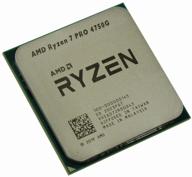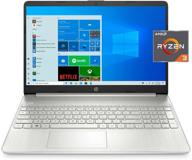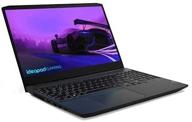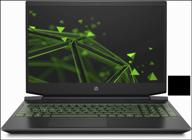
Review on 🔥 Qotom-Q555G6-S05: Powerful Intel Core i5 7200U Industrial Micro PC with 6 Gigabit Ethernet NIC - Small yet Versatile Barebone System by Jorge Kehayas

Overview for a network engineer.
This little device is quite light but powerful. If you're not too shy to open it up, I'd recommend getting the barebones version and buying the storage and mSATA separately as it's a lot cheaper. Offers: https://www.amazon.com/gp/product/B07GZFGD2B/ (256GB mSATA) and https://www.amazon.com/gp/product/B01ACODGMC/ (16GB RAM). At my house it runs Juniper vMX on top of KVM. The first interface is connected to my cable modem and the other five are bridged to the vMX instance. Since vMX doesn't support NAT, I run a separate Linux namespace for network address translation. Since the device is running vMX, the load is typically high (current load average: 2.12, 2.20, 2.23), with qemu clearly running. big max: PID USER PR NI VIRT RES SHR S %CPU %MEM TIME+ COMMAND1654 libvirt+ 20 0 9378932 45412 21608 S 221.0 0.3 971:09.89 qemu-system-x86 This in turn causes the device to heat up significantly. While I'm pretty sure passive cooling will suffice in a well-ventilated area, I have it in a closed cabinet with a separate switch and my cable modem, so I have a small fan blowing air around it. If I don't, it gets a little warm. The CPU temperature is around 60-65 degrees Celsius: root@rtr:# Sensorsit8786-isa-0a40Adapter: ISA-Adapterin0: 1.19V (min = +0.00V, max = +3.06V) in 1:1 0.34V (Min = +0.00V , Max = +3.06V)in2: 2.22V (Min = +0.00V, Max = +3.06V)in3: 2 .21V (Min = +0.00V, Max = +3.06V)in4: 2.23V (Min = +0.00V, Max = +3.06V)in5: 2.23V ( Min = +0.00V, Max = +3.06V)in6: 2.08V (Min = +0.00V, Max = +3.06V)3VSB: 3.65V (Min = +0 .00 V, Max = +6.12 V) Vbat: 3.55 Vfan1: 0 rpm (Min = 11 rpm) ALARMtemp1: +41.0 °C (low = -4.0 °C, high = +127.0 °C) Sensor = Temp2 thermal diode: +40.0 °C (low = +109.0 °C, high = +127.0 °C) Sensor = thermal diode Temp3: -70.0 °C ( low = -95.0 °C, high = +127.0 °C) sensor = thermal penetration diode0: OKacpitz-acpi-0 adapter: interface ACPItemp1: +27.8°C (crit = +119.0°C)temp2 : +29.8°C (crit = +119.0°C) pch_skylake-virtual-0adapter: virtual device temp1: +34.5°C core temp -isa-0000adapter: ISA adapter package ID 0: +63.0°C (high = +100.0 °C, crit = + 100.0 °C) Core 0: +62.0 °C (high = +100.0 °C, critical = +100.0 °C) Core 1: +63.0 °C (high = +100.0 °C , Critical = +100.0 °C) Again, this isn't surprising as I put quite a bit of stress on it. In terms of forwarding performance: absolutely amazing. It easily reaches 500Mbps. Network cards can handle jumbo frames (my current internal MTU is 9100) and support VLAN. Other data of interest: root@rtr:# lspci00:00.0 Host Bridge: Intel Corporation Xeon E3-1200 v6/7th Gen Core Processor Host Bridge/DRAM Registers (rev 02) 00:02.0 VGA Compatible Controller: Intel Corporation HD Graphics 620 ( rev 02)00:08.0 System peripherals: Intel Xeon Corporation E3-1200 v5/v6 / E3-1500 v5 / CPU 6th/7th/8th Gen Gaussian Mixture Model00:14.0 USB Controller: Intel Corporation Sunrise Point-LP USB 3.0 xHCI Controller ( 21)00:14.2 Signal Processor: Intel Corporation Sunrise Point-LP Thermal Subsystem (Version 21)00:15.0 Signal Processor: Intel Corporation Sunrise Point- LP Serial IO I2C Controller #0 (Rev. 21)00:15.1 Signal processing controller: Intel Corporation Sunrise Point-LP Serial IO I2C Controller #1 (Rev. 21)00:16.0 Communications controller: Intel Corporation Sunrise Point-LP CSME HECI #1 (Rev 21)00:17.0 SATA Controller: Intel Corporation Sunrise Point-LP SATA Controller [ AHCI mode] (Version 21)00:1c.0 PCI Bridge: Intel Corporation Sunrise Point-LP PCI Express root port # 1 (Rev. f1)00:1c.1 PCI Bridge: Intel Corporation Sunrise Point-LP PCI Express Root Port #2 (Rev. f1)00:1c . 2 PCI Bridge: Intel Corporation Sunrise Point - LP PCI Express Root Port #3 (Rev. f1)00:1c.3 PCI Bridge: Intel Corporation Sunrise Point - LP PCI Express Root Port #4 ( Rev. f1)00:1c.4 PCI Bridge: Intel Corporation Sunrise Point-LP PCI Express Root Port #5 (rev f1)00:1c.5 PCI Bridge: Intel Corporation Sunrise Point-LP PCI Express Root Port #6 (rev f1)00:1e.0 Controller Signal Processing : Intel Corporation Sunrise Point-LP Serial IO UART Controller #0 (Rev. 21)00:1f.0 ISA Bridge: Intel Corporation Sunrise Point-LP LPC Controller (Rev. 21)00:1f.2 Storage Controller: Intel Corporation Sunrise Point - LP PMC (Rev. 21)00:1f.3 Audio Device: Intel Sunrise Point-LP HD Audio (Rev. 21)00:1f.4 SMBus: Intel Sunrise Point- LP SMBus (Rev. 21)01:00.0 Ethernet Controller: Intel Corporation I211G Gigabit Network Connection (Rev. 03)02:00.0 Ethernet Controller: Intel Corporation I211 Gigabit Network Connection (Rev. 03)03:00.0 Ethernet Controller: Intel Corporation I211 gigabit network kconnection (Rev. 03)04:00.0 Ethernet Controller: Intel Corporation I211 Gigabit Network Connection (Rev.03)05:00.0 Ethernet Controller: Intel Corporation I211 Gigabit Network Connection (Rev.03)06:00.0 Ethernet Controller: Intel Corporation I211 Gigabit -Network Connection (Rev. 03)[0.157447] smpboot: CPU0: Intel(R) Core( TM) i5-7200U CPU @ 2.50GHz (Family: 0x6, Model: 0x8e, Stepping: 0x9) In other words, you won't be disappointed be.
- Satisfied so far
- Quality
New products
Comments (0)
Top products in 💻 Desktops

Refurbished 2019 Apple iMac with Retina 4K/3.6 GHz Intel Core i3 🖥️ Quad-Core (21.5-Inch, 8GB RAM, 1TB) - Silver: Ultimate Deal on a Powerful Renewed Desktop!

13 Review

🖥️ Dell Optiplex 990 Tower Business Desktop Computer: Intel Quad Core i5, 8GB RAM, 500GB HDD, Windows 10 Pro (Renewed)

12 Review

Processor AMD Ryzen 7 PRO 4750G AM4, 8 x 3600 MHz, OEM

11 Review

HP Pavilion Gaming Desktop Computer, Ryzen 5 3500 Processor, NVIDIA GTX 1650 4 GB, 8 GB RAM, 512 GB SSD, Windows 10 Home (TG01-0030, Black)

11 Review
Another interesting products

HP 15 Ef1300Wm 3 3250 Silver Windows

100 Review

Lenovo IdeaPad Gaming 3: 15.6 Inch AMD Ryzen Gaming Laptop with RTX 3060 6GB GDDR6

118 Review

13-Inch Apple MacBook Pro with 8GB RAM and 512GB SSD Storage in Space Gray - Previous Model

77 Review

HP Pavilion Gaming 15-ec2048ur 15.6" Laptop 1920x1080, AMD Ryzen 5 5600H 3.3GHz, 8GB RAM, 512GB SSD, NVIDIA GeForce RTX 3050, DOS, 4E0T5EA, Dark Grey/Bright Green Chrome Logo

77 Review

